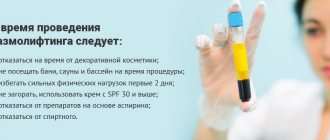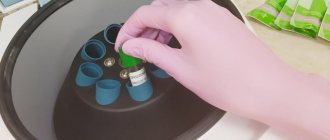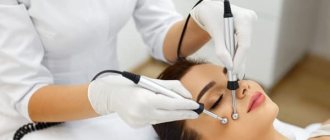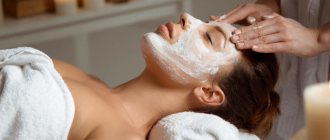- Similarities and differences between biorevitalization and plasmolifting
- Indications for biorevitalization
- Indications for plasma lifting
- Contraindications
- What is better – biorevitalization or plasma lifting?
Injectable anti-aging treatments are very popular, but choosing the right option on your own can be difficult. In order to make a decision, you need to know the features, indications and contraindications of various procedures.
It is best to entrust the final choice to a cosmetologist: after the examination, the doctor will recommend suitable techniques. However, it never hurts to get a general idea of the most popular procedures for skin rejuvenation - biorevitalization and plasma lifting.
Contraindications
Any injection procedures are contraindicated:
- During pregnancy, lactation;
- With diagnosed oncological, autoimmune, and some endocrine diseases;
- With a tendency to form keloid scars;
- During the period of exacerbation of any chronic diseases;
- If there are rashes in the treatment area, inflammatory processes occur;
- For bleeding disorders.
In addition, plasma lifting cannot be done within 3 to 4 weeks after an illness or surgery, in the presence of certain diseases of the cardiovascular system.
External resemblance
At first glance, the procedures are absolutely identical.
These are injection methods of skin treatment and rejuvenation that stimulate natural regeneration processes. The problem area is injected with a syringe with a thin needle manually or using a pneumatic gun, and a previously prepared preparation is injected into the upper or middle layers of the dermis. But in plasma lifting, the active substance is the patient’s own plasma, enriched with platelets and purified from red blood cells. And biorevitalization is done using hyaluronic acid or preparations based on it. Accordingly, these procedures differ somewhat in impact.
The positive effect in both cases is enhanced by skin perforation. Small punctures are multiple microtraumas. The body, trying to quickly restore the integrity of the skin, forces cells to regenerate as quickly as possible. Blood flows to the wounds, lymphocytes rush in and due to this, their healing accelerates.
What is better – biorevitalization or plasma lifting?
This question can be answered this way: the best procedure is one that satisfies the actual needs of the skin. That is, according to testimony. If the epidermis is overdried, then the choice will fall on biorevitalization. Almost all women need this procedure; it allows you to “revive” tired skin and give it radiance. If you need to tidy up young, problematic skin, it is better to choose plasma lifting. Treatment with your own plasma is suitable for patients of all ages and helps to successfully fight inflammation. The cosmetologist will make the exact prescription of the procedures, guided by the indications, contraindications and the result to be obtained.
Many alternate courses of plasma lifting and biorevitalization to comprehensively improve the condition of the skin and prevent age-related changes.
Combined use of the PLASMOLIFTING TM method with injection and hardware correction methods
R. Akhmerov, Doctor of Medical Sciences, Professor, General Director of the Clinic,
R. Zarudiy, Candidate of Medical Sciences, maxillofacial surgeon, implantologist,
O. Korotkova, dermatocosmetologist,
A. Altyeva, Candidate of Medical Sciences, maxillofacial surgeon, plastic surgeon,
E. Kumukova, dermato-oncologist, Moscow, Russia
Essay
Options for combining the PlasmoliftingTM method with other anti-aging procedures in comprehensive care programs for aging skin are presented. The use of the PlasmoliftingTM method allows you to achieve the best results, reduce the recovery time after traumatic skin procedures, and stimulate the skin cells’ own regenerative response. Various techniques for injecting platelet-rich plasma into the skin have been demonstrated.
1. INTRODUCTION
The problem of treating age-related changes in the face remains one of the main ones in dermatocosmetology. The main causes of age-related skin changes are a violation of antioxidant protection, thinning of capillary walls, a decrease in the amount of hyaluronic acid, and a violation of melanogenesis. As a result, the skin loses its firmness and elasticity, and wrinkles and folds form.
Cosmetic procedures are aimed at preventing and restoring the effects of various temporary and external aging factors. But unfortunately, it is not possible to achieve an ideal result with a prolonged effect using individual procedures.
Therefore, the choice of a dermatocosmetologist is comprehensive care programs that combine in various combinations methods such as botulinum therapy, contour plastic surgery, biorevitalization, plasma lifting ( PlasmoliftingTM ) , mesotherapy, chemical peels, intralipotherapy, thread lifting, and various hardware methods.
2. PLASMOLIFTINGTM IN COMPLEX CARE PROGRAMS FOR AGING SKIN
Plasmolifting is a universal method of tissue stimulation, which consists of local injection of platelet-rich autoplasma (PRP).
It is not entirely clear by what mechanisms the regenerative effect of platelet-rich plasma occurs; most likely, the main role here is played by growth factors contained in platelets. However, other hypotheses cannot be ignored: cytokine, nutrient, hormonal, environmental.
Due to its biological properties and the resulting clinical effects, plasmolifting can be considered a basic procedure in the practice of a modern dermatocosmetologist.
After the procedure for administering PRP, there is a smoothing of fine wrinkles, a decrease in the depth of deep wrinkles, nasolabial folds, an increase in skin elasticity, smoothing of its relief, improved color, elimination of sagging, a decrease in the intensity of hyperpigmentation, and an improvement in the oval of the face. In addition, stimulation of the skin’s own regenerative processes allows one to achieve a prolonged effect from other injection procedures.
A. Techniques for administering platelet-rich plasma
At the moment, we have developed the following techniques for administering PRP: papular, linear, cannula and reinforcement.
The papular technique is performed using a 30 G needle, 4 mm long, and the drug is administered intradermally. This technique is recommended for flabby atrophic skin, finely wrinkled type of aging. A particularly good effect is observed in the periorbital, zygomatic areas, forehead, upper lip, neck, décolleté, and arms. The distance between the insertion points is 0.5–1 cm.
Frequent injections of small portions of PRP serve as a powerful stimulus for collagen synthesis and thickening of the dermis. At the same time, fine wrinkles are smoothed out, skin elasticity increases, and its dryness decreases. The skin takes on a radiant appearance.
As you know, facial muscles are woven into the skin at one end, so subcutaneous injections can stimulate the work and increase the tone of the facial muscles.
For the linear technique, a 30 G needle with a length of 12 mm is used. The needle is inserted intradermally, parallel to the surface of the skin, the drug is linearly retrograde. For “wide” wrinkles, a fan-shaped technique is used. The sandwich technique is effective for deep wrinkles and folds. The linear technique allows you to carefully “work out” nasolabial folds, “puppet” wrinkles, folds on the neck, and linear wrinkles on the cheeks. Needle separation prior to PRP administration increases the effectiveness of the procedure.
For the cannula technique, a 25 G cannula with a length of 40 mm is used. A puncture is made on the facial skin with a 23 G needle, and the tissue is separated. The first time the cannula is inserted 1.5 cm above the angle of the lower jaw and moved with regressive movements along the oval of the face into the buccal and zygomatic areas. The second time the cannula is inserted into the area of the zygomatic arch, which makes it possible to treat the infraorbital, temporal and buccal areas. When moving the cannula towards the lower eyelid, it is necessary to control the lower edge of the orbit with the index finger. The third time the cannula is inserted 1 cm lateral to the corner of the mouth, it is passed to the corner of the mouth, along the nasolabial fold, the “puppet” wrinkle. The advantages of this technique are that it is atraumatic and painless.
Cannulas can also be used to treat the back surfaces of the hands. In this case, the cannula is inserted into the projection of the base of the 3rd metacarpal bone, passed subcutaneously in a fan-shaped manner, intradermally or subdermally in depth.
Reinforcement is also carried out with a 30 G needle 12 mm long. The depth of injection can be either intradermal or subdermal. The drug is administered linearly (along lines running parallel to the contour of the face), in parallel rows at a distance of 1 cm from each other. Then along lines running in a perpendicular direction, thus creating a reinforcing mesh. This mesh serves as a “matrix” along which new collagen will be synthesized. The framework formed as a result of PRP injections is designed to preserve youthful skin and “maintain” the oval of the face.
Usually about 0.5 ml of PRP is injected per 2 cm2 of skin surface, however, in the periorbital and buccal areas, it is permissible to inject a larger amount of plasma.
Using the correct technique for administering platelet-rich plasma for various skin conditions allows you to achieve the best results and obtain the maximum regenerative effect.
Monotherapy Plasmolifting The use of PRP in monotherapy also gives good results in correcting age-related skin changes. Under the influence of PRP, fine and deep wrinkles are smoothed out, microcirculation and metabolism are improved, cellular respiration is normalized, due to this the complexion improves, radiance appears, skin turgor increases, swelling disappears, especially in the periorbital area.
For age-related atrophy of the facial skin, the course consists of 3-4 procedures with an interval of 1 week, the next maintenance course is carried out no earlier than 4 months later.
Recently, the treatment of cellulite using the plasma lifting method has become especially important. The course of procedures consists of 6-9 procedures with an interval of 7-10 days. Allows you to achieve skin tightening, smoothing, improves microcirculation and lymphatic drainage.
B. Combination of PRP injections with other anti-aging procedures
An important condition for effective correction is compliance with the protocols for combining PRP injections with other anti-aging procedures. In our practice, we most often combine plasmolifting with injections of botulinum toxin type A, injection of fillers based on hyaluronic acid, mesotherapy, biorevitalization, intralipotherapy, chemical peels, and thread lifting.
Plasmolifting + BTA injections
When combining plasma lifting with injections of botulinum toxin type A, caution must be exercised. Thanks to the regenerative effect of plasma, blood supply to tissues improves, reinnervation accelerates, and the duration of action of botulinum toxin is accordingly reduced. Thus, PRP injections should be done at least a week in advance, and no earlier than 3 weeks after botulinum toxin injections.
Plasmolifting + contouring with fillers based on hyaluronic acid
PRP injections create conditions in the skin for collagen synthesis. Clinical experience shows that hyaluronic fillers administered after plasma injections remain in the tissue longer than usual.
The protocol for a comprehensive rejuvenation program in this case includes: a course of plasmolifting procedures (usually 2-4 procedures (depending on the condition of the skin) with an interval of one week), then after 7-10 days contouring with filler based on hyaluronic acid. This combination is justified for use in the practice of dermatocosmetologists.
Plasmolifting + mesotherapy
The combination of plasma lifting with mesotherapy is especially justified for treating the scalp with various types of alopecia. Good results can be obtained by combining PRP injections with Trental injections, which helps to increase blood microcirculation.
In this case, we recommend using the following scheme: for a course - 3 plasmolifting procedures at intervals of a week, then a maintenance plasmolifting procedure after a month, then 6-8 mesotherapy procedures at intervals of a week. This course can be repeated 2 times a year
Plasmolifting + biorevitalization
The combination of plasma lifting with biorevitalization allows not only to prolong the effect of biorevitalization, but also to achieve the best results in the fight against photoaging of the skin of the face, neck, and décolleté.
In this case, the “week - every other week” scheme is justified: alternating PRP and biorevitalization procedures with an interval between procedures of 1 week; it is recommended to carry out 4 procedures of each type per course (8 procedures in total).
There is also another scheme: after 2 plasma lifting procedures, only 2 biorevitalization procedures are performed, while obtaining a fairly long-lasting positive effect.
Plasmolifting + intralipotherapy
The combination of plasma lifting with intralipotherapy is especially justified in the area of the double chin and thighs. Thanks to the action of PRP, the skin thickens and does not “sag” after intralipotherapy.
It is recommended to carry out 2 plasma lifting procedures with an interval of one week before the introduction of lipolytics and from 1 to 3 procedures a month with an interval of a week after their administration.
Plasmolifting + chemical peelings
The combination of plasma lifting with chemical peels is justified to achieve faster re-epithelialization and stimulate regeneration. It is acceptable to use both a mask of platelet-rich plasma (by analogy with the use of PRP in combustiology) and injection of PRP on days 5–7 after peeling. The procedure allows you to achieve an additional rejuvenating effect, actively affects areas of hyperpigmentation by suppressing the synthetic activity of melanocytes and preventing the appearance of secondary pigmentation
plasma lifting + thread lifting
As an alternative to plastic surgery, thread lifting has proven itself in some cases. The use of platelet-rich plasma before the installation of threads can significantly shorten the rehabilitation period and obtain an additional effect of skin rejuvenation. It is acceptable to carry out Plasmolifting 10-14 days before installing Aptos threads.
Thanks to this combination of procedures, it is possible to halve the rehabilitation period, as well as quickly cope with swelling after the installation of threads.
3. CONCLUSION
Clinical experience confirms the advisability of combining PlasmoliftingTM with other rejuvenating methods to achieve the best result, reduce rehabilitation time after traumatic procedures, and also stimulate the skin cells’ own regenerative response.
LITERATURE
- Permission to use new medical technology dated October 26, 2010 FS No. 2010/380 “Autostimulation of regenerative processes in the treatment of periodontitis and atrophic conditions of the soft tissues of the midface.”
- Froum SJ, Wallace SS, Tarnow DP, Cho SC Effects of platelet-reach plasma on bone growth and osseintegration in human maxillary sinus grafts: Three bilateral case reports. Int J Periodontics Restorative Dent. – 2002, No. 22. - R. 45-53.
- Blair P, Flaumenhaft R. Platelet alpha-granules: basic biology and clinical correlates. Blood Rev 2009;23:177–189.
Technology
Stages of plasma lifting:
- Venous blood sampling in a volume of 20-60 ml (the amount is determined individually). It is performed on an empty stomach (you can drink a glass of water) immediately before the procedure.
- The biomaterial is placed in a test tube, supplemented with an anticoagulant and processed in a laboratory centrifuge, where it is separated into individual components. The injections only require platelets.
- The skin is cleansed and wiped with an antiseptic solution. Anesthesia is usually not used, as the process does not cause much pain. In some cases, with increased sensitivity of the skin and at the request of the patient, an analgesic cream can be applied.
- According to a pre-planned scheme, the doctor injects a substance obtained from a centrifuge with a syringe with an ultra-thin needle.
- Treated areas are disinfected.
Biorevitalization technique:
- The skin is cleansed and wiped with an antiseptic.
- Future injection points are marked.
- An anesthetic substance is applied, and a special film is placed on top to enhance its effect.
- A sterile syringe filled with the drug is removed from the individual packaging.
- Injections are performed according to a specific pattern.
- Treated areas are disinfected.
Features of the procedures
Despite the great similarities, each of the procedures has its own distinctive features, as well as pros and cons. That is why they can be used either individually or in alternation.
Plasmolifting also goes well with mesotherapy and some physiotherapeutic procedures . And biorevitalization is often done in conjunction with Botox injections.
Plasmolifting
The secret of the high efficiency of plasma lifting is in the composition of platelet-rich plasma. It contains stem cells that can replace damaged ones. Thus, the highest ability of tissues to self-heal is achieved.
Injected under the skin, the patient's own blood plasma primarily mobilizes the internal resources of the human body, triggering its ability to self-heal. Thanks to this, the procedure has not only a rejuvenating, but also a healing effect.
It is worth choosing if you need to achieve the following results:
- moisturize the epidermis well;
- reduce the depth of facial wrinkles;
- restore lost skin turgor;
- smooth out small scars and scars;
- remove shallow pigmentation;
- heal skin after burns and injuries;
- reduce enlarged pores;
- eliminate acne;
- remove marks and acne stains;
- make the oval of the face clearer.
A significant advantage of this procedure is the minimal number of contraindications. It is hypoallergenic and can be performed on damaged and very sensitive skin.
The disadvantages include the high price (expensive equipment is required for plasma processing) and the risk of activation of autoimmune diseases in patients with a genetic predisposition to them.
Biorevitalization
During biorevitalization, the skin is actively moisturized, since the hyaluronic acid used for the procedure is able to attract and retain water molecules. But this is far from its only useful property; it:
- serves as a filler, filling and smoothing out wrinkles;
- stimulates the production of collagen and elastin;
- evens out skin texture;
- helps improve complexion;
- eliminates dryness and flaking of the skin;
- increases its protective functions;
- reduces enlarged pores;
- normalizes sebum secretion.
Hyaluronic acid is often one of the main components of mesotherapy cocktails, which also contain amino acids, vitamins, minerals, coenzymes, etc.
The procedure provides a faster visual effect than plasma therapy. But it comes with additional risks.
The disadvantages of biorevitalization include quite severe swelling and persistent redness of the skin after the procedure. It is not so rare to be allergic to it. With frequent repetition, an addictive effect occurs, the skin stops responding to the drugs.
Patient reviews
Patients evaluate both treatment options positively. The results of the injections are seen in every case. Sometimes one of the options is called more suitable. Plasma injections are often equated with therapeutic effects, and more dramatic results are expected from the intervention.
The patient sees effectiveness only in plasma lifting, considering a specific area.
Positive impression about plasma injections.
A potential patient is considering the option of combining 2 procedures.
The opinion is that plasma lifting is stronger than biorevitalization.
Opinion of cosmetologists
Experts cannot say unequivocally what is more effective: biorevitalization or plasma lifting. Both methods are effective, especially in terms of anti-aging correction. To obtain maximum results, it is recommended to carry out procedures in combination, as well as in combination with other types of cosmetic services.
Indications
Biorevitalization and plasma therapy have many common indications. Both procedures are excellent anti-aging treatments, which are recommended by experts to solve the following problems:
- sagging and loss of skin elasticity;
- unhealthy complexion;
- decreased skin tone and elasticity;
- multiple small wrinkles;
- swelling of the oval of the face;
- loss of clarity of contours;
- dryness and flaking of the skin;
- hyperpigmentation;
- photoaging;
- sagging skin after losing weight.
Also, both procedures help to recover faster after traditional plastic surgery or deep peels (chemical or laser). It is advisable to use them as a prevention of premature aging and early formation of wrinkles.
Performed before a vacation that the patient plans to spend on the seaside, plasma lifting and biorevitalization will help to simultaneously look better and protect the skin from the negative effects of summer external factors: ultraviolet radiation, heat and insufficiently clean or too hard water.











